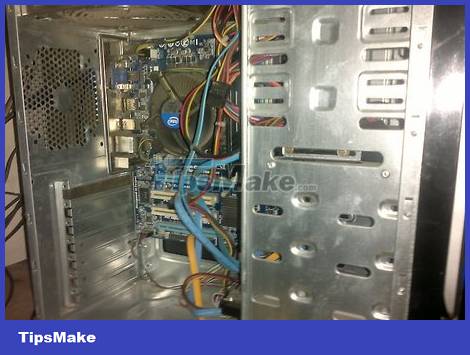How to Determine Your Computer's Maximum Amount of RAM
Check OS

Determine if your Windows is 32-bit or 64-bit. The Windows operating system can only recognize a maximum amount of RAM. If you install more than the allowed RAM limit, the excess RAM will not be used. This limit is determined by whether the version of Windows is 32-bit or 64-bit.
See more tutorials to learn how to check your copy of Windows. Normally, you can determine whether your Windows is 32 or 64-bit from within the System Properties window (⊞ Win+Pause)
32-bit can support up to 4 GB of RAM (for all versions).
64-bit can support up to 128 GB of RAM (Windows 10 Home) to 2 TB (Windows 10 Education, Enterprise, Pro)

Check model for Macbook. The total amount of RAM your Mac can support depends on the model you're using. Many Mac computers have different amounts of supported memory. Check your Macbook's documentation for the exact amount of RAM. Some popular models include:
iMac (27-inch, Late 2013) - 32 GB
iMac (2009-Late 2012) - 16 GB
iMac (2006-2009) - 4 GB

Determines the amount of RAM that the Linux operating system supports. A 32-bit Linux can only support up to 4 GB, but if the PAE kernel is enabled (for most new distributions), a 32-bit system can support up to 64 GB of RAM. . Theoretically, a 64-bit Linux system can support up to 17 billion GB of RAM, although the maximum limit is in practice 1 TB (Intel) or 256 TB (AMD64).
To determine the exact amount of RAM your system can support, open Terminal by pressing Ctrl+Alt+T. Type sudo dmidecode -t 16. Enter the administrator password. Finally, look at the Maximum Capacity: section.
Check the motherboard

Identify your motherboard. Even if the operating system supports an extremely large amount of RAM, you are still limited by what the motherboard can support. If you can't see your motherboard's documentation, you'll need to find your motherboard or search for its specs online.
You may need to open the case and look at the motherboard number.

Check the motherboard documentation. Near the beginning of the motherboard documentation, you can find a chart or a specification page. Look at the maximum amount of RAM or System Memory that can be installed. You will also see the number of slots available on your motherboard.
RAM is installed in pairs. If your motherboard supports 16 GB of RAM and has 4 slots (dual channel), you can install four 4 GB sticks or two 8 GB sticks to hit the limit.

Use the system scan tool. If you don't feel like opening up your computer or reading through the motherboard documentation, there are many online tools available that can help you scan your system and report how much memory is left, as well as the type and speed of memory available. support.
You can find major memory scanning websites by manufacturers and retailers, like Crucial or MrMemory.

Upgrade RAM. After determining how much RAM your system can support, you can install new RAM. Make sure that the clock speed corresponds to the original RAM speed if you are adding new RAM to existing RAM.
You should read it
- Steps to add/remove 'Maximum processor state' from Power Options in Windows
- How to speed up Windows 10, optimize Windows 10 for maximum performance
- How to change the Maximum processor frequency setting in Windows 10
- How to increase the maximum download speed on computers and laptops
- DMAX () function (returns conditional maximum value) in Excel
- How to Amplify Wi Fi sóng
 The easiest way to Check your device RAM
The easiest way to Check your device RAM How to disable Secure Boot mode
How to disable Secure Boot mode How to Remove the Latest Samsung Galaxy Tab Battery
How to Remove the Latest Samsung Galaxy Tab Battery Should I upgrade my laptop's SSD?
Should I upgrade my laptop's SSD? World's fastest wireless hard drive AIRmini: Copy 10GB file takes 5 seconds, dust/waterproof, 10 hour battery
World's fastest wireless hard drive AIRmini: Copy 10GB file takes 5 seconds, dust/waterproof, 10 hour battery Samsung announces the world's first 240Hz 4K monitor
Samsung announces the world's first 240Hz 4K monitor